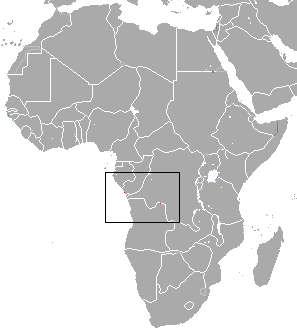
Megabats constitute the family Pteropodidae of the order Chiroptera (bats). They are also called fruit bats, Old World fruit bats, or—especially the genera Acerodon and Pteropus—flying foxes. They are the only member of the superfamily Pteropodoidea, which is one of two superfamilies in the suborder Yinpterochiroptera. Internal divisions of Pteropodidae have varied since subfamilies were first proposed in 1917. From three subfamilies in the 1917 classification, six are now recognized, along with various tribes. As of 2018, 197 species of megabat had been described.

The pygmy fruit bat, also known as the grey fruit bat, is a species of megabat.

The black-capped fruit bat is a species of megabat in the monotypic genus Chironax.

Geoffroy's rousette is a species of megabat or Old World fruit bats. It is one of ten species in the genus Rousettus.

The bare-backed rousette is a species of megabat.

The pygmy long-eared bat is a vesper bat, found in the north of the Australian continent. An insectivorous flying hunter, they are one of the tiniest mammals in Australia, weighing only a few grams and one or two inches long.

Blanford's fruit bat is a mountain species of megabat. It is found in several countries in South and Southeast Asia.

The sculptor squirrel or Bornean pygmy squirrel is a species of rodent in the family Sciuridae. It was described by Michael Rogers Oldfield Thomas in 1898. It is monotypic within the genus Glyphotes. It is endemic to northern Borneo in Sabah and Sarawak (Malaysia) and inhabits areas elevated at 285–1,800 metres (935–5,906 ft).

The Mindanao pygmy fruit bat is a species of megabat in the family Pteropodidae. It is the only species within the genus Alionycteris. It is endemic to the Philippines. Its natural habitat is subtropical or tropical dry forests at high elevations that are either scarce or overtaken by tourist hotspots. As a result, this species may be seeking new elevated habitats likely in the southern region of the Philippines and along the islands of Sulawesi.

Beaufort's naked-backed fruit bat is a species of megabat in the family Pteropodidae. It roosts in caves.

The lesser Angolan epauletted fruit bat is a species of megabat in the family Pteropodidae. It is found in Angola and the Republic of the Congo. Its natural habitats are subtropical or tropical dry and moist lowland forest, and savanna.

Wahlberg's epauletted fruit bat is a species of megabat in the family Pteropodidae. It is commonly found across southern Africa.

The Fischer's pygmy fruit bat or Philippine pygmy fruit bat is a species of megabat in the family Pteropodidae. It is monotypic within the genus Haplonycteris. It is endemic to the Philippines. Its natural habitat is subtropical or tropical dry forests.

The harpy fruit bat is a species of megabat in the family Pteropodidae. It is endemic to the Philippines.

The greater musky fruit bat is a species of megabat in the family Pteropodidae. It is endemic to the Philippines. It was named by Peters for Fedor Jagor.

The Borneo fruit bat is a species of megabat found in the mountains of Borneo, specifically East Malaysia and Brunei. It is considered a subspecies of Aethalops alecto by some authors.

Brooks's dyak fruit bat is a species of megabat in the family Pteropodidae endemic to Sumatra. It was formerly included as a subspecies of the dayak fruit bat. It is named for Cecil Joslin Brooks, who collected the type specimen near Bencoolen and presented it to Oldfield Thomas.

Andersen's naked-backed fruit bat or Andersen's bare-backed fruit bat is a large cave-dwelling species of megabat in the family Pteropodidae. It is endemic to the Bismarck Archipelago including the Admiralty Islands in Papua New Guinea.
















